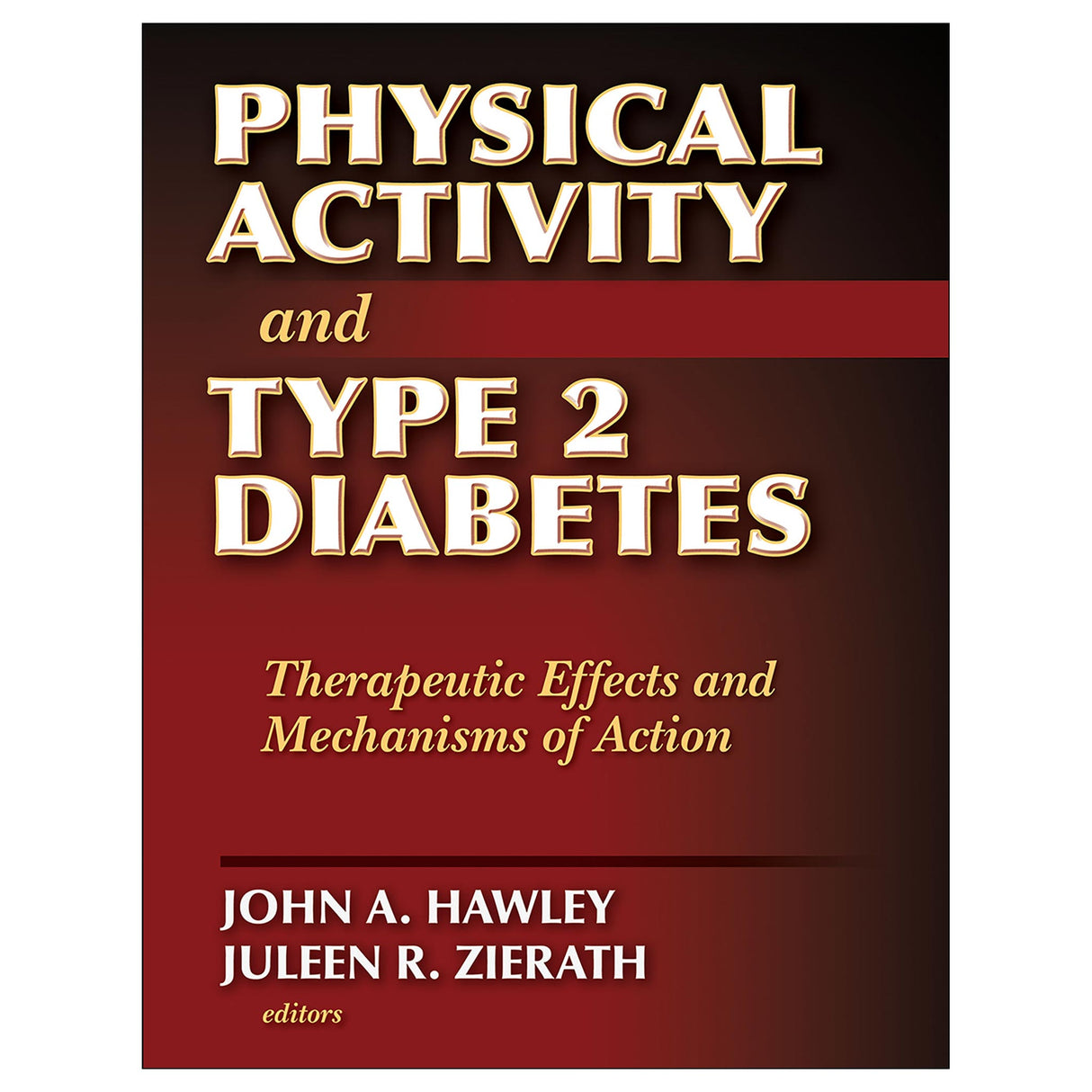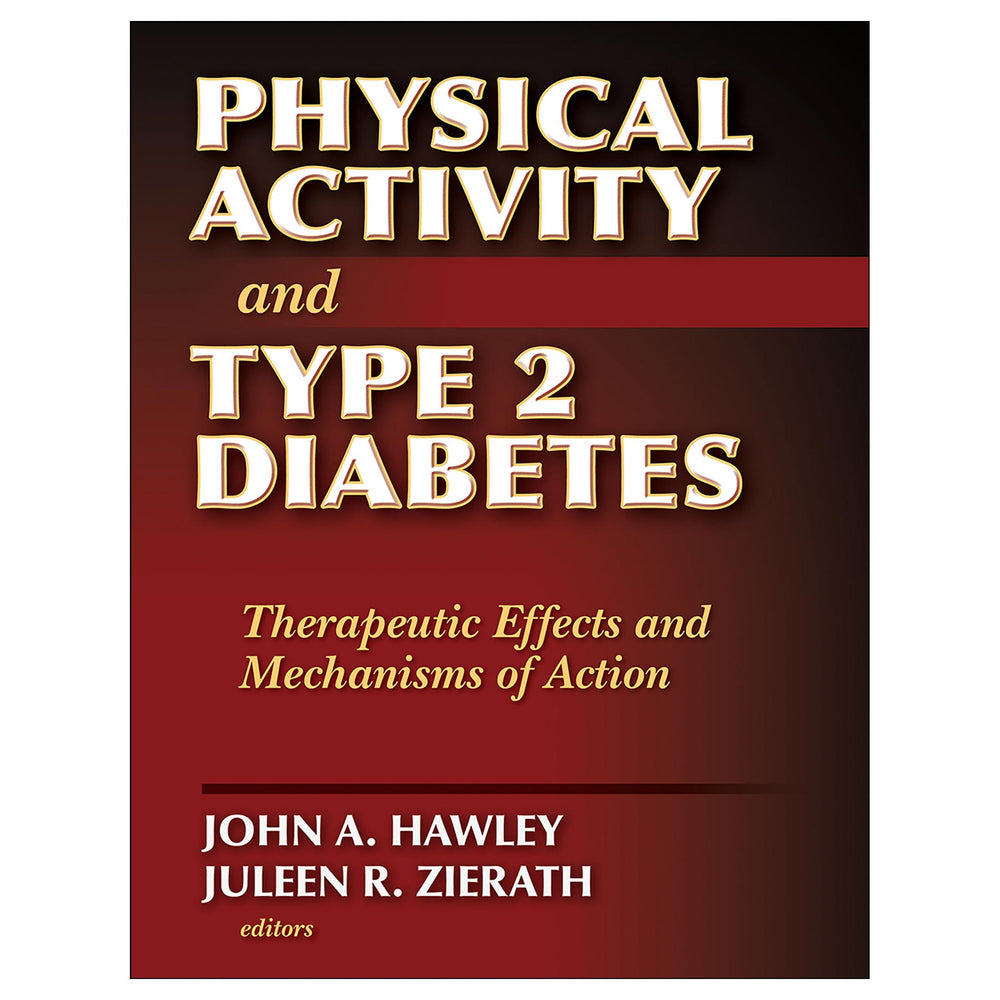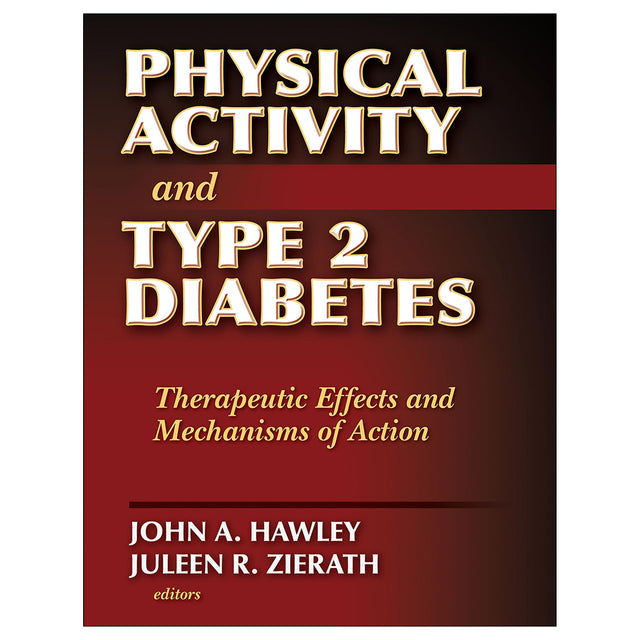Physical Activity and Type 2 Diabetes
Therapeutic Effects and Mechanisms of Action
Author: John A. Hawley, Juleen R. Zierath
$138.95 CAD
Over the past 50 years, there has been a dramatic increase in the prevalence of interrelated metabolic disease states, including obesity, insulin resistance, and type 2 diabetes mellitus. In modern Western nations, the population-based prevalence of insulin resistance is approaching 20%, and type 2 diabetes is now the most common endocrine disorder in adults. No longer a disease reserved for the aging population, type 2 diabetes is also on the rise in adolescents. Approximately 30% of all newly diagnosed cases (between 1982 and 1994 in the United States alone) are among people 10 to 19 years of age.
For those engaged in a struggle against this modern-day epidemic, Physical Activity and Type 2 Diabetes provides cutting-edge research to energize current efforts in diabetes prevention, management, and treatment. The most in-depth and up-to-date book on the topic, Physical Activity and Type 2 Diabetes presents a series of independent but related chapters authored by the foremost researchers of insulin resistance examining topics such as these:
-Physical inactivity as a primary cause for the rising incidence of insulin resistance
-The emergence of an “exercise-deficient” phenotype
-The effects of exercise training on selected aspects of substrate metabolism
-The role of endurance and resistance training programs for the prevention and treatment of insulin resistance
-The identification of new molecular targets and pathways useful for the treatment of insulin resistance and type 2 diabetes.
Physical Activity and Type 2 Diabetes provides a four-part, in-depth examination of the relational nature of diabetes and physical activity. Part I begins with a description of the scope and extent of the “diabesity” epidemic. The risk factors for diabetes, the underlying causes of the epidemic, and its potential consequences are outlined as well as the role of physical inactivity in the pathogenesis of diabetes and plans for preventive exercise biology.
Part II continues with an examination of some of the major defects of substrate metabolism in individuals with insulin resistance, while in part III the authors discuss the impact of exercise interventions in the prevention, management, and treatment of type 2 diabetes. Part IV presents recent developments in molecular and cellular biology that may provide treatment therapies for the prevention of type 2 diabetes.
Based on extensive research, Physical Activity and Type 2 Diabetes presents a wealth of information to assist the biomedical and research community in creating prescriptive therapeutic tools for type 2 diabetes intervention—and offers hope for the alleviation of the global epidemic of insulin resistance.
Audience
A professional reference for clinical research scientists, research fellows, academic and pharmacological scientists, clinical investigators, governmental agencies, and health care clinicians in the areas of basic and applied research, wellness, and health care promotion; a research-based text for graduate-level courses and seminars.
Part I: Aetiology of Insulin Resistance and Type 2 Diabetes: Prevalence and Consequences of the “Diabesity” Epidemic
Chapter 1: The Increasing Burden of Type 2 Diabetes: Magnitude, Causes, and Implications of the Epidemic
Edward W. Gregg, PhD, and Andrea K. Kriska, PhD
Trends in Prevalence and Incidence
Risk Factors for Diabetes and Causes of the Epidemic
Determinants of Recent Trends in the Epidemic
Anticipated Consequences of Diabetes and the Outlook for Prevention
Concluding Remarks
Chapter 2: Waging War on Type 2 Diabetes: Primary Prevention Through Exercise Biology
Frank W. Booth, Manu V. Chakravarthy, and Matthew J. Laye
Scope of the Problem
Rationale for action
Physical Inactivity's Contributing Role in the Pathogenesis of Diabetes
New Ammunitions
Future Battle Plans
Concluding Remarks
Part II: Defects in Metabolism and Insulin Resistance
Chapter 3: Fatty Acid Uptake and Insulin Resistance
Arend Bonen, Adrian Chabowski, Jan F.C. Glatz, and Joost J.F.P. Luiken
LCFAS and Their Uptake Across the Sarcolemma
Fatty Acid Transporters
Fatty Acid Transport and Transporters in Human Obesity and Type 2 Diabetes
Concluding Remarks
Chapter 4: Lipid Metabolism and Insulin Signaling
Jason R. Berggren, Leslie A. Consitt, and Joseph A. Houmard
Lipid Metabolism in Skeletal Muscle
The Insulin-Signaling Pathway
Does Lipid Exposure Impair Insulin Action?
Perturbations in Lipid Metabolism, Insulin Signal Transduction, and Insulin Action With Type 2 Diabetes and Obesity
The Exercise Paradox
Effect of Weight Loss on Muscle Lipid Accumulation and Insulin Signaling
Concluding Remarks
Chapter 5: Metabolic Inflexibility and Insulin Resistance
Bret Goodpaster, PhD, and David E. Kelley, MD
Substrate Utilization During Resting Conditions in Lean, Healthy Individuals
Substrate Utilization in Insulin-Resistant Individuals
Potential Cellular Mechanisms for Metabolic Flexibility in Fat Oxidation
Effects of Weight Loss on Metabolic Flexibility in Obesity and T2DM
Effects of Exercise Training on Metabolic Flexibility in Obesity and T2DM
Concluding Remarks
Chapter 6: Nutrient Sensor Links Obesity With Diabetes Risk
Sarah Crunkhorn and Mary Elizabeth Patti
Nutrient Sensing and Control of Food Intake
Overnutrition, Disruption of Homeostatic Control, and Insulin Resistance
Cellular Nutrient Sensing
Concluding Remarks
Chapter 7: Inflammation-Induced Insulin Resistance in Obesity: When Immunity Affects Metabolic Control
Phillip James White and Andrᅵ Marette
Obesity Is a Chronic Low-Grade Inflammatory State
Evolution of Inflammation in Obesity
Lipid Mediators
Protein Kinase Mediators
Transcriptional Mediators
Concluding Remarks
Part III: Prevention of Type 2 Diabetes Through Exercise Training
Chapter 8: Transcription Factors Regulating Exercise Adaptation
David Kitz Krï¿œmer and Anna Krook
Activation of MAP Kinase Signaling
Factor of Activated T Cells (NFAT)
Regulation of GLUT4 Expression
Mitochondria Biogenesis and Increased Lipid Oxidation
Exercise-Mediated Regulation of PPARs
Peroxisome Proliferators Activated Receptor Gamma Coactivator (PGC)-1
Concluding Remarks
Chapter 9: Exercise and Calorie Restriction Use Different Mechanisms to Improve Insulin Sensitivity
Gregory D. Cartee, PhD
Exercise and Calorie Restriction Effects on Skeletal Muscle Energy Status
Exercise/Contraction-Stimulated Signaling Pathway for Glucose Transport
Exercise Training Effects on Insulin Sensitivity and Insulin Signaling
Effects of Calorie Restriction Distinct From Weight Loss
Effects of Calorie Restriction on Insulin Signaling in Skeletal Muscle
Combined Effects of Exercise and Calorie Restriction
Concluding Remarks
Chapter 10: Mitochondrial Oxidative Capacity and Insulin Resistance
Kevin R. Short
An Overview of Mitochondrial Structure and Function
Evidence for a Role for Mitochondria in Insulin Resistance and Diabetes
Evidence That Mitochondria Are Not Responsible for Insulin Resistance
Concluding Remarks
Chapter 11: Effects of Acute Exercise and Exercise Training on Insulin Action in Skeletal Muscle
Erik A. Richter and Jï¿œrgen F.P. Wojtaszewski
Exercise and Contraction Signaling in Muscle
Insulin Signaling: A Web
Effect of a Single Bout of Exercise on Insulin Sensitivity
Effects of Exercise Training on Insulin Action
Concluding Remarks
Chapter 12: Resistance Exercise Training and the Management of Diabetes
Jï¿œrgen F.P Wojtaszewski, Henriette Pilegaard, and Flemming Dela
Resistance Training and Insulin Sensitivity
Mechanisms Behind Resistance Training–Induced Improvements in Insulin Sensitivity
Training-Induced Gene Expression
Conclusion and Perspectives
Concluding Remarks
Part IV: Prevention of Type 2 Diabetes: Identification of Novel Molecular Targets and Pathways
Chapter 13: AMPK: The Master Switch for Type 2 Diabetes?
W.W. Winder and D.M Thomson
Discoveries Suggesting AMPK Could Be Important for Prevention and Treatment of Type 2 Diabetes
Could Type 2 Diabetes Be a Consequence of Deficiency in AMPK Signaling?
How Can AMPK Activation Help Prevent Type 2 Diabetes?
Can Chemical AMPK Activation Prevent Diabetes?
Feasibility of Using AMPK Activators
Future Directions
Concluding Remarks
Chapter 14: Protein Kinase C and Insulin Resistance
Carsten Schmitz-Peiffer
The PKC Family of Serine or Threonine Kinases
Roles for PKC in Normal Glucose Homeostasis
PKC and Defective Glucose Disposal
Concluding Remarks
Chapter 15: Evidence for the Prescription of Exercise as a Therapy for the Treatment of Patients With Type 2 Diabetes
Sarah J. Lessard and John A. Hawley
Options for the Treatment of Insulin Resistance and Type 2 Diabetes
Molecular Evidence for the Prescription of Exercise Training
Exercise and Drug Combination Therapy
Exercise-Like Effects of Current Antihyperglycemic Drugs
Prescription of Exercise Training: Practical Considerations
Concluding Remarks
“In all, this volume offers a valuable update on factors underlying the benefits of exercise in the prevention and treatment of type 2 diabetes.”
Applied Physiology, Nutrition, and Metabolism





